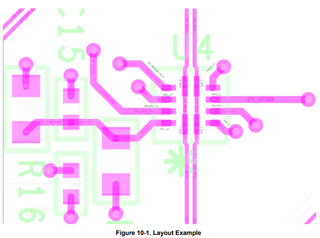Hi -
I see that there are many questions asked regarding TUSB216 and similar devices if D1 and D2 should/must be shorted under the device.
The only response I see is that yes, they should be shorted for correct function.
Please help me understand how this chip can signal condition the signals shorted? Please in technical detailed terms.
As the potential, boost and frequency must be identical if the two pads are shorted, what does the chip do? If we skip the chip and just have a trace it would have the same affect.
To me, it looks like saying that the below sample schematic would work exactly the same with or without the short over the diode.
This is very puzzling.
Thanks,
Michael


